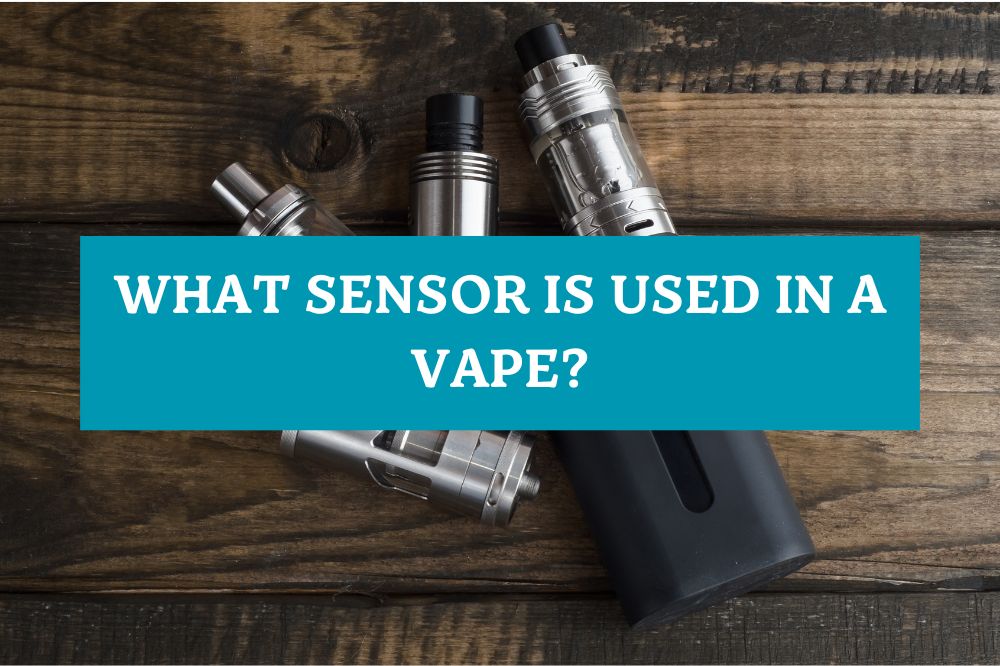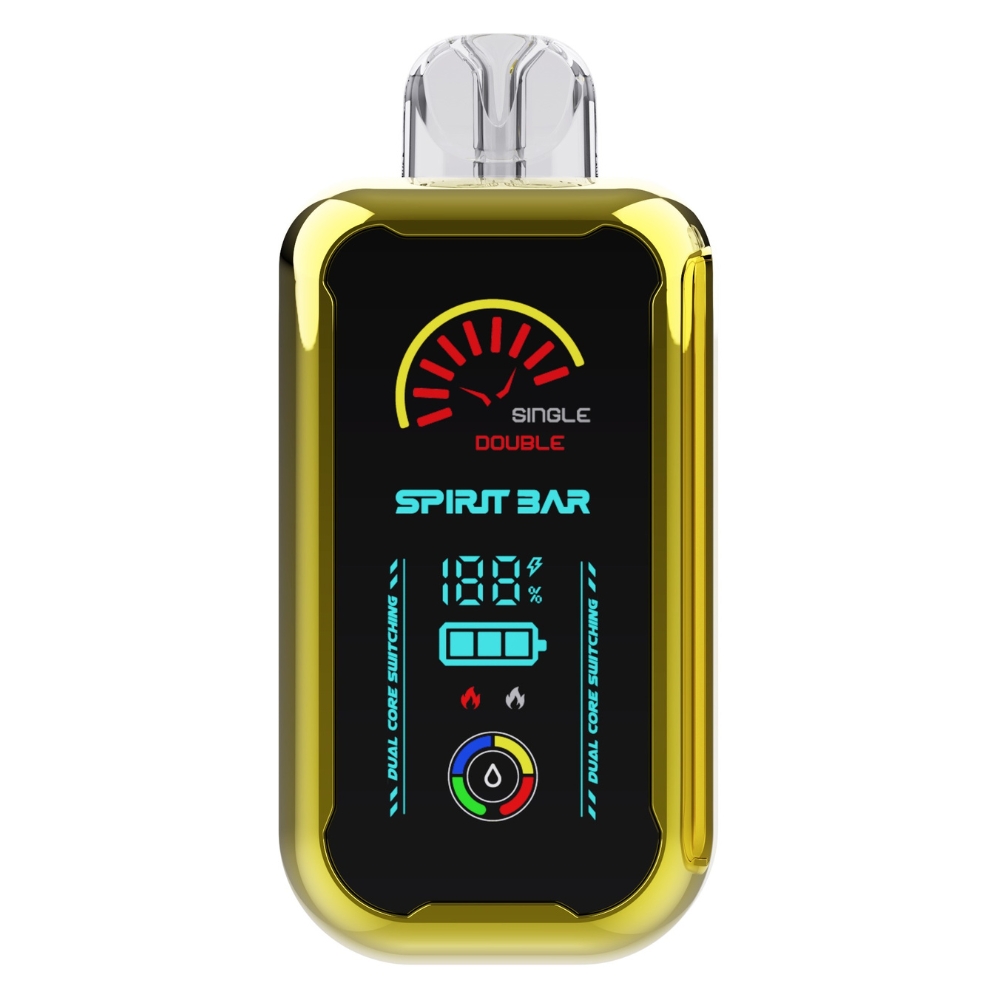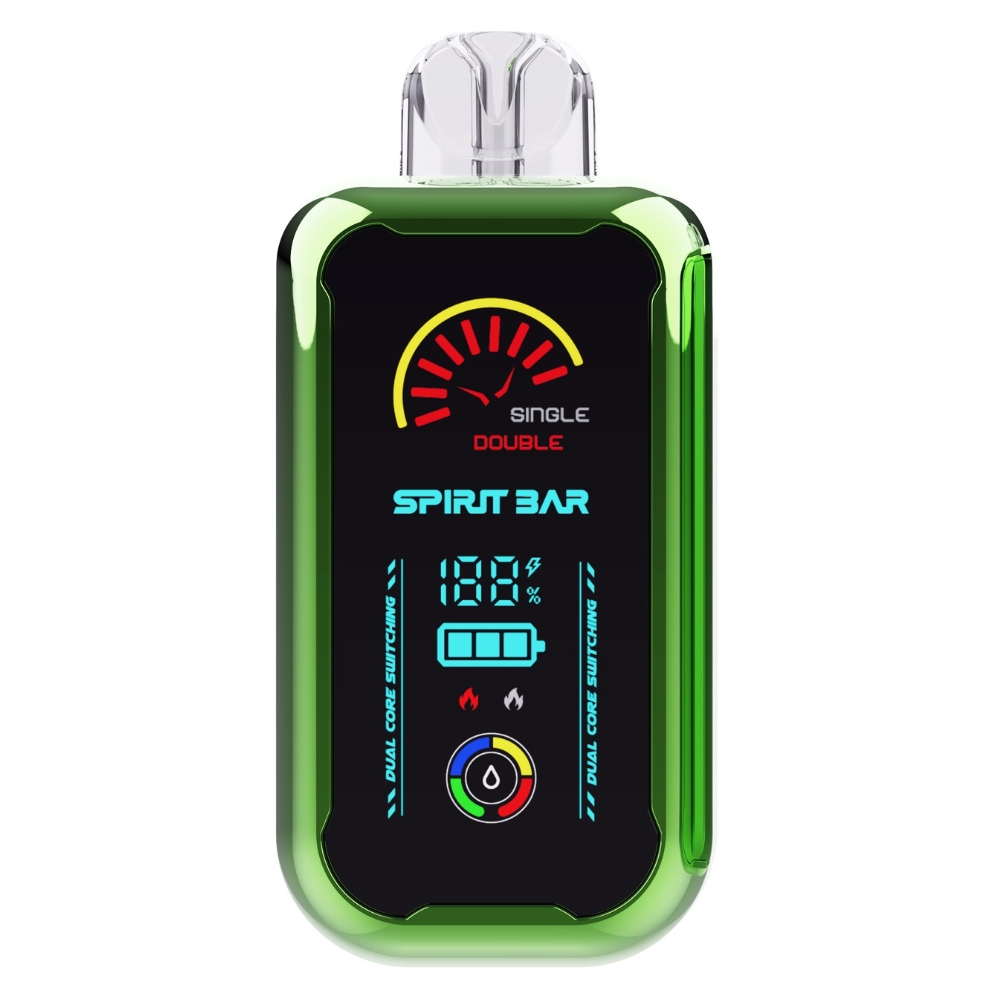What Sensor is Used in a Vape?

If you’re wondering what sensor is used in a vape, you’re not alone. Vaping has become increasingly popular in recent years, and with that comes questions about how it works and what components are involved. One of the key components of any vape device is the sensor, which is responsible for detecting when the user inhales and activating the heating element that turns the e-liquid into vapor.
There are several different types of sensors that can be used in a vape device, each with its own advantages and disadvantages. One common type of sensor is a flow sensor, which detects changes in airflow when the user inhales. This type of sensor is often used in smaller, more compact devices that are designed to be discreet and easy to use. Another type of sensor is a pressure sensor, which detects changes in pressure when the user inhales. This type of sensor is often used in larger, more powerful devices that are designed for experienced vapers who want more control over their vaping experience.
Ultimately, the type of sensor used in a vape device will depend on a variety of factors, including the size and design of the device, the preferences of the user, and the specific features and functions of the device. Whether you’re a beginner or an experienced vaper, understanding the role of the sensor in your device can help you get the most out of your vaping experience.
Understanding Vapes
If you’re new to vaping, it can seem overwhelming to understand all the different components and sensors involved. A vape is a device that allows you to inhale a specific amount of nicotine or smoke while avoiding the harmful effects of uncontrolled smoking.
At the heart of every vape is the atomizer, which is the heating element responsible for vaporizing the e-liquid. The atomizer consists of a coil that heats up when you press the vape button, and a wick that absorbs the e-liquid and carries it to the coil.
In addition to the atomizer, there are several sensors used in vape devices to ensure optimal vaping conditions. These sensors come in different types, each serving a specific purpose to enhance the vaping experience.
One of the most common sensors used in vapes is the temperature sensor. This sensor monitors the temperature of the heating coil or the e-liquid to ensure optimal vaping conditions. By accurately measuring the temperature, the sensor can prevent the coil from overheating or burning the e-liquid, which can result in an unpleasant taste and potentially harmful chemicals.
Another type of sensor used in vapes is the airflow sensor. This sensor monitors the amount of air flowing through the vape device and adjusts the temperature and vapor output accordingly. By controlling the airflow, the sensor can create a smoother and more enjoyable vaping experience.
Overall, understanding the different components and sensors used in vapes can help you choose the right device for your needs and ensure a safe and enjoyable vaping experience.
Types of Sensors Used in Vapes
When it comes to vaping, sensors play a crucial role in ensuring a smooth and safe vaping experience. Here are the three main types of sensors used in vapes:
Temperature Control Sensors
Temperature control sensors are used to regulate the temperature of the heating element in the vape device. These sensors ensure that the temperature of the heating element stays within a safe range, preventing the device from overheating and causing damage to the battery or other components.
Airflow Sensors
Airflow sensors are used to monitor the flow of air through the vape device. These sensors help regulate the draw resistance, which is the amount of effort required to inhale vapor from the device. Airflow sensors also help prevent dry hits, which occur when the heating element is not properly saturated with e-liquid.
Battery Level Sensors
Battery level sensors are used to monitor the charge level of the vape device’s battery. These sensors help prevent the battery from overcharging or discharging, which can cause damage to the battery or other components. Battery level sensors also help prevent the device from running out of power unexpectedly, ensuring a consistent vaping experience.
Overall, the sensors used in vapes play a critical role in ensuring a safe and enjoyable vaping experience. By regulating temperature, airflow, and battery level, these sensors help prevent damage to the device and ensure a consistent vaping experience.
Sensor Technology in Vapes
Vapes are electronic devices that vaporize a liquid mixture to create a flavored aerosol. This aerosol is then inhaled by the user. Vapes generally contain a heating element, a battery, and a liquid cartridge. The liquid mixture in the cartridge contains a combination of propylene glycol, glycerin, flavorings, and often nicotine or other active ingredients.
To create the vapor, the heating element in the vape is activated, which heats up the liquid mixture in the cartridge. As the liquid mixture heats up, it vaporizes, creating an aerosol that is then inhaled by the user. The heating element in the vape is usually a coil that is made of a metal wire, such as Kanthal or stainless steel.
To detect the presence of vape in the air, sensors are used. Vape sensors can detect the presence of vapor or smoke produced by vape devices or e-cigarettes that have nicotine, THC, or CBD active ingredients. There are different types of sensors that can be used in vapes, including:
- Laser scattering sensors: These sensors use laser technology to detect the presence of vape juice particulates that are suspended in the air. These particles are emitted by vapes and other inhaled products. Laser scattering is the most sensitive and reliable way to detect vaping.
- Photoionization detectors: These sensors use ultraviolet light to ionize the air, creating a current that can be measured. When vape particles are present in the air, they can be detected by the sensor.
- Metal oxide sensors: These sensors use a metal oxide film that reacts with vapor or smoke in the air. When the metal oxide film reacts, it changes the electrical resistance of the sensor, which can be measured.
Overall, sensor technology in vapes is an important tool for detecting the presence of vapor or smoke in the air. By using sensors, it is possible to monitor and enforce policies on smoking and vaping in a variety of settings, such as schools, workplaces, or public spaces.
Choosing the Right Vape: Sensor Considerations
When it comes to choosing the right vape, there are a few sensor considerations you should keep in mind. The sensor technology used in a vape can greatly affect its performance and accuracy in detecting vaping activity. Here are some factors to consider when choosing a vape with the right sensor:
Type of Sensor
There are two main types of sensors used in vape detectors: particulate sensors and gas sensors. Particulate sensors detect small particles that are released when vaping occurs, while gas sensors detect specific gases that are released when vaping occurs. Both types of sensors are effective in detecting vaping activity, but gas sensors tend to be more accurate in detecting the presence of vaping in the air.
Range of Detection
The range of detection is another important factor to consider when choosing a vape with the right sensor. The range of detection refers to the distance at which the sensor can detect vaping activity. A vape with a longer range of detection is more effective in detecting vaping activity in larger rooms and spaces.
Placement of Sensor
The placement of the sensor is also important in ensuring accurate detection of vaping activity. It is recommended to install the vape sensor at a height of 8-9 feet for best air quality measurements, but the placement can vary depending on the intended use case.
Accuracy
Accuracy is crucial when it comes to detecting vaping activity. It is important to choose a vape with a sensor that has a high level of accuracy in detecting vaping activity. A vape with a high level of accuracy will help ensure that vaping activity is detected and reported accurately.
Maintenance and Upkeep
Finally, it is important to consider the maintenance and upkeep of the sensor. Regular cleaning and maintenance of the sensor will help ensure that it continues to function properly and accurately detect vaping activity.
By considering these sensor considerations when choosing a vape, you can ensure that you select a vape with the right sensor technology to accurately detect vaping activity.
Safety Features Enabled by Sensors
Sensors used in vape detectors enable schools and organizations to take proactive measures to ensure student safety. Here are some safety features enabled by sensors:
- Real-time Monitoring: Vape detectors with real-time monitoring capability can detect vaping incidents as they happen. This feature allows for immediate response and intervention, preventing further incidents.
- Customizable Alerts: Vape detectors that offer customizable alerts allow schools and organizations to set up alerts for specific areas or times of day. This feature ensures that staff members are notified of vaping incidents as they happen, allowing for immediate action.
- High Sensitivity: Vape detectors with high sensitivity can accurately detect vape aerosols, ensuring that no incidents go unnoticed. This feature is essential in ensuring that schools and organizations can take proactive measures to prevent vaping incidents.
- Data-based Insights: Vape detectors that provide data-based insights can help schools and organizations identify patterns and trends in vaping incidents. This feature can help schools and organizations take proactive measures to prevent future incidents.
- Integration with Other Systems: Vape detectors that can integrate with other systems, such as security cameras, can provide a more comprehensive view of incidents. This feature can help schools and organizations take proactive measures to prevent vaping incidents and other safety threats.
Overall, sensors used in vape detectors enable schools and organizations to take proactive measures to ensure student safety. By providing real-time monitoring, customizable alerts, high sensitivity, data-based insights, and integration with other systems, vape detectors can help schools and organizations prevent vaping incidents and other safety threats.
Future of Sensor Technology in Vapes
As vaping continues to grow in popularity, the technology behind it is also advancing at a rapid pace. One area that is seeing significant development is the sensor technology used in vapes. These sensors are critical for ensuring safety, regulating temperature, and providing an optimal vaping experience.
In the future, we can expect to see even more advanced sensors being developed for use in vapes. Some potential advancements include:
- Smart sensors: These sensors can detect when a user is vaping and adjust the device’s settings accordingly. For example, if the user takes a longer draw, the sensor can increase the temperature to ensure a consistent vape.
- Safety sensors: These sensors can detect when the device is overheating or when the battery is low, and shut off the device to prevent any potential safety hazards.
- Real-time monitoring: With the help of advanced sensors, it may be possible to monitor a user’s vaping habits in real-time. This data can then be used to provide personalized recommendations for the user, such as adjusting nicotine levels or suggesting different flavors.
- Improved accuracy: As sensor technology continues to improve, we can expect to see more accurate temperature regulation and better control over the vaping experience. This will ensure that users can enjoy a consistent and satisfying vape every time.
Overall, the future of sensor technology in vapes looks very promising. With continued development and innovation, we can expect to see even more advanced sensors being developed that will provide users with a safer, more personalized, and enjoyable vaping experience.








